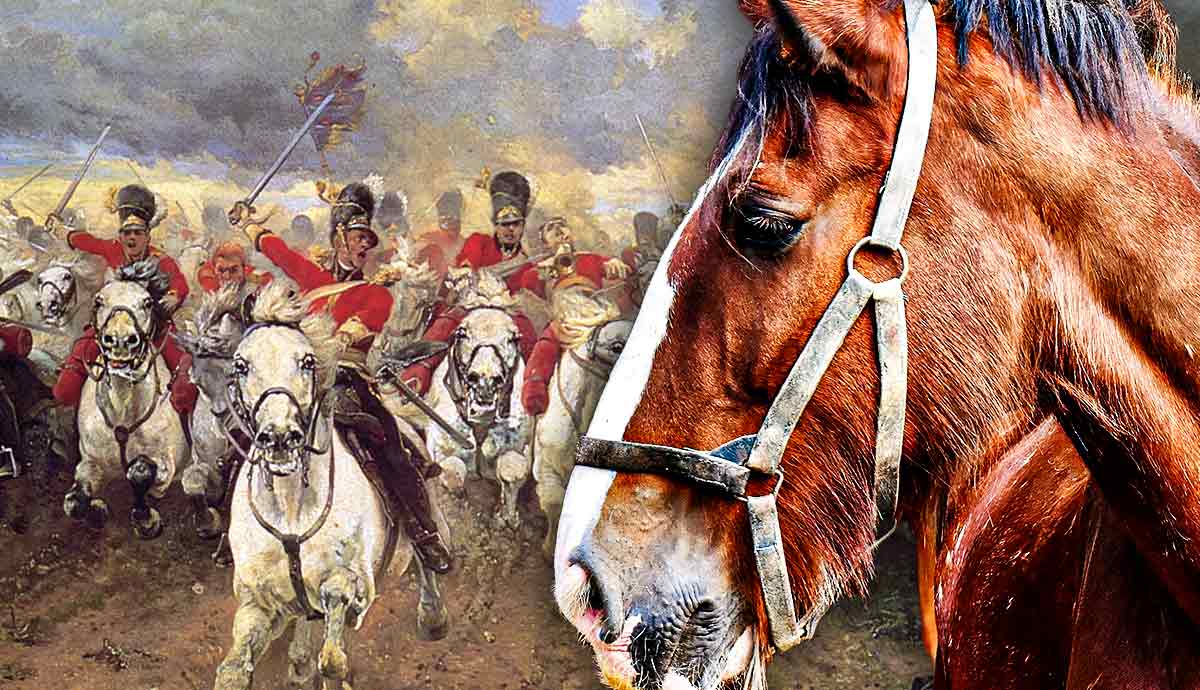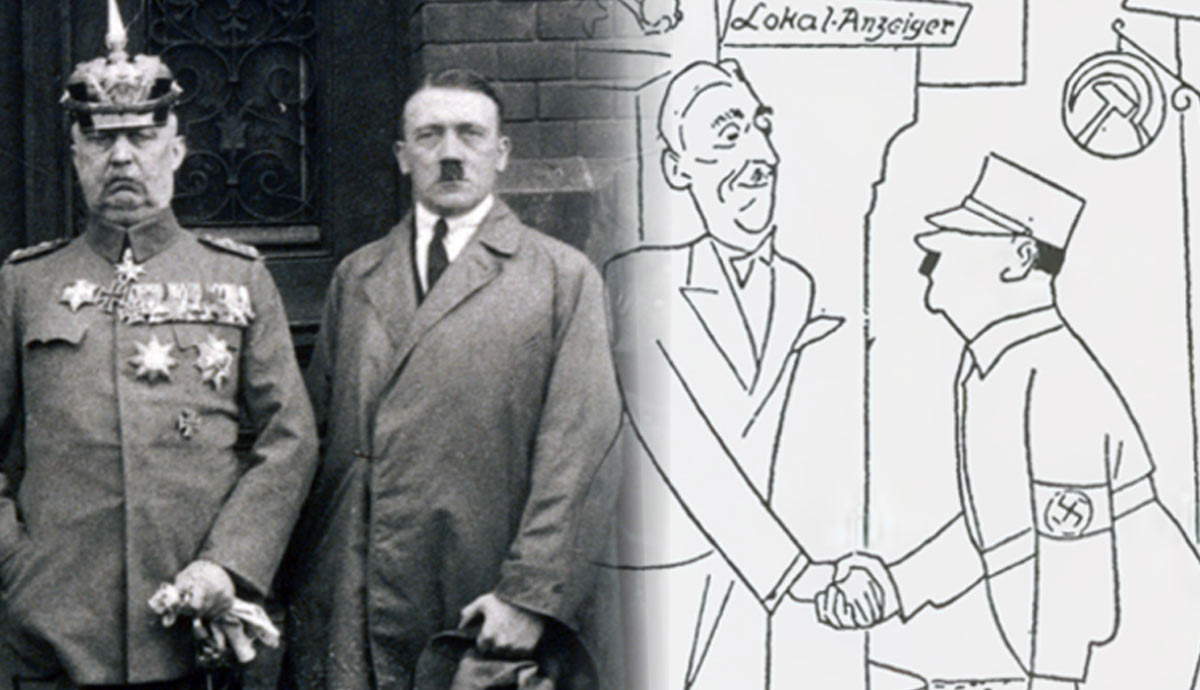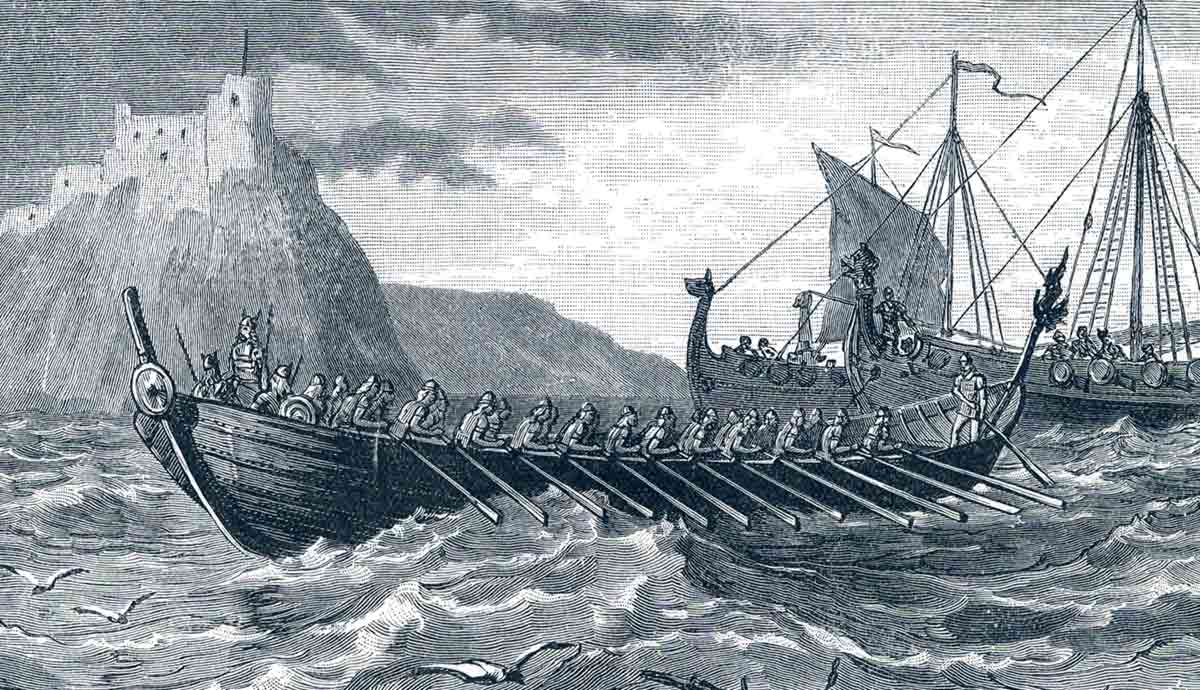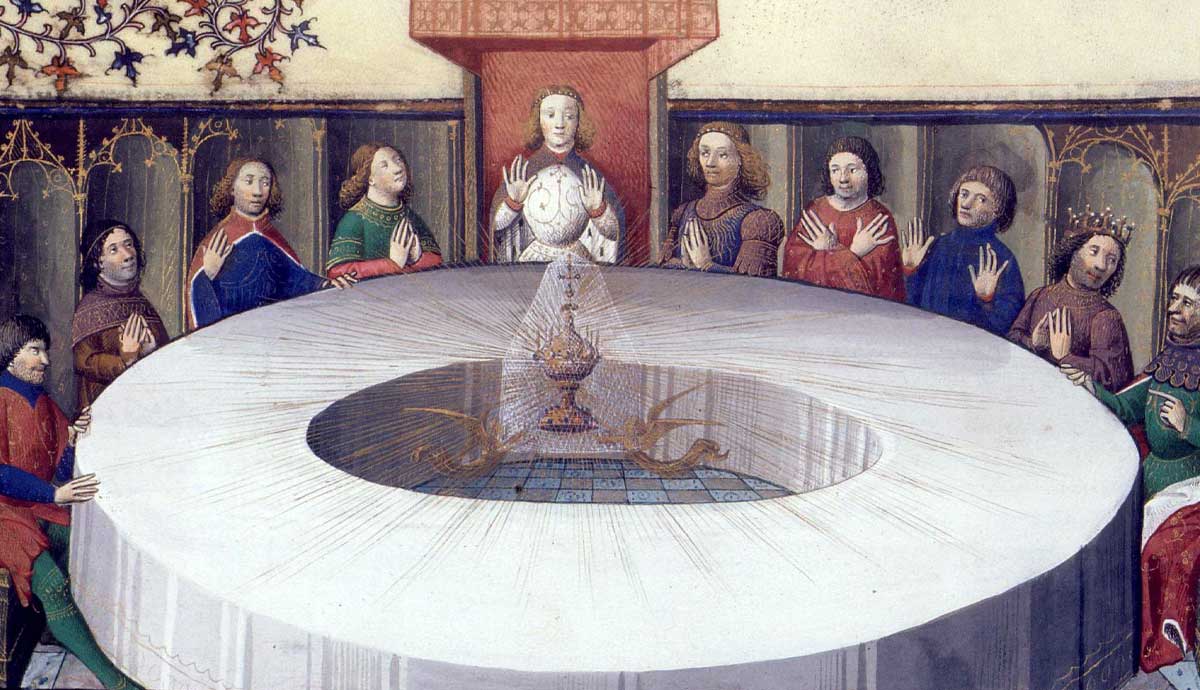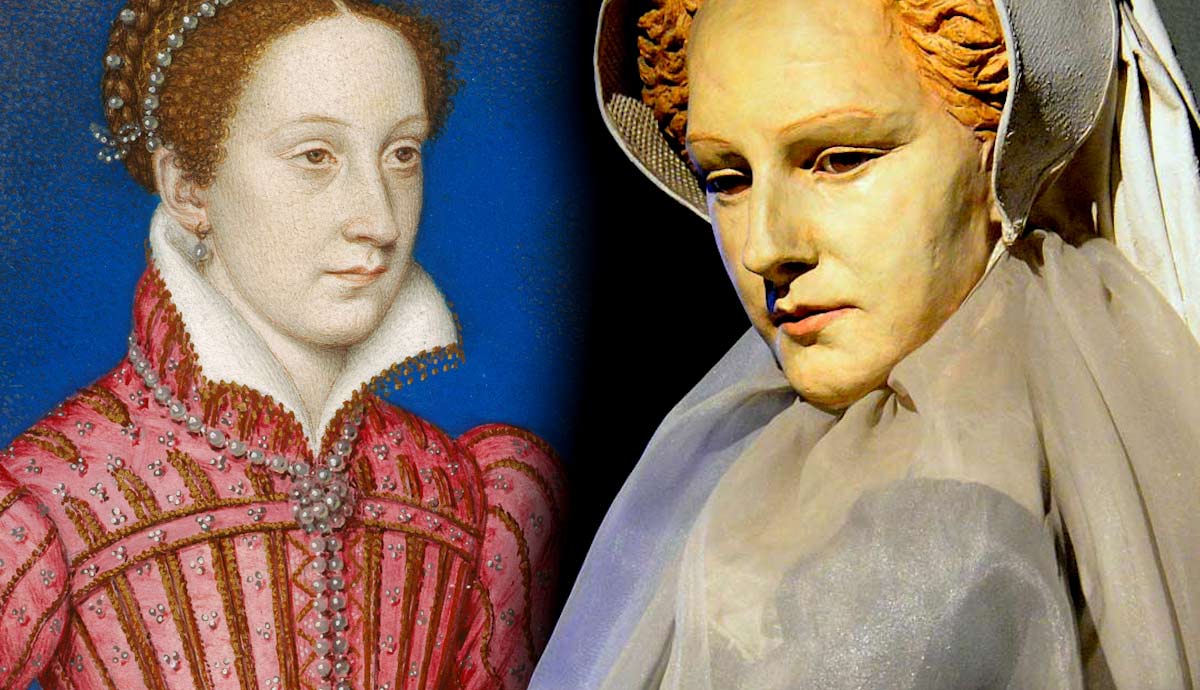
summary
- Mary Queen of Scots, born in 1542, faced political intrigue and religious tensions in Scotland and England, leading to a turbulent reign.
- Her marriages, including to Lord Darnley and the Earl of Bothwell, were marked by conflict and controversy, contributing to her downfall.
- Imprisoned by Queen Elizabeth I, Mary was eventually executed in 1587 after being implicated in plots against the English throne.
- Despite her tragic end, Mary Queen of Scots remains a symbol of Scottish national pride and a key figure in British history.
Mary Queen of Scots lived a turbulent life that shook the political stability of England and Scotland and drew major attention to the religious animosity that existed on the Isle of Great Britain.
With her claim to the English throne and her popularity as a political and military figure, Mary Queen of Scots threatened to overturn centuries of tradition. She pitted religions against each other and drew conflict from the lords of Scotland in their bid for power.
Birth & Childhood of Mary Queen of Scots

Mary Stuart was born in Linlithgow Palace, west of Edinburgh in Scotland, on December 8, 1542. Her father was King James V, ruler of the Kingdom of Scotland, and her mother was Mary of Guise, a French noblewoman. Their family was Catholic, as was much of Scotland and a sizable portion of England. This would become a significant factor in the future political maneuverings of the two kingdoms.
Mary was said to have been born prematurely and was the only legitimate child to survive her father. She was just six days old when her father died. There are various theories of what caused James’ death. It may have been injuries sustained at the Battle of Solway Moss on November 24, 1542—a defeat for Scotland against England. Another theory is that he died from drinking contaminated water while on a campaign. Either way, his untimely death left a power vacuum, as he had no male heir to succeed him. Despite this, Mary was named Queen of Scotland.
Seeing an opportunity, both England and France began plotting to take control of the throne of Scotland. Mary’s great-uncle Henry VIII, the king of England, made plans for Mary to marry his eldest son Edward when both were of age. This was agreed upon by the Scottish authorities, but it created great consternation within the kingdom, as the Scots had great animosity towards the English.
Under pressure from within their kingdom, the Scottish authorities were forced to break this agreement. Henry VIII responded by sending an English army to attack Scotland. The French seized this opportunity and helped Scotland defend itself. As a result, it was agreed that Mary would marry the Dauphin, Francis, the heir to the throne of France.

While Mary was still very young, she was sent to live in France, where she spent the rest of her childhood. There, she was educated in the royal court, learning many languages and spending her time sewing and riding in the countryside, among other things. At some point during her childhood, she contracted smallpox, but she survived, and it did not mark her features.
In 1558, when she was 15 and the Dauphin, Francis, was 14, they were married in Notre Dame Cathedral in Paris.
One year later, King Henry II of France died from wounds inflicted in a jousting tournament, and Francis inherited the throne. Mary became queen not just of Scotland but of France. Her reign over France, however, would not last long.
One year after their marriage, King Francis II died from the effects of chronic otitis (ear infection), and his younger brother ascended the throne as Charles IX. His mother, Catherine de Medici, ruled France as regent. The same year, Mary’s mother, who was ruling Scotland as regent, had also died, and a grief-stricken Mary Stuart made plans to return to Scotland.
Meanwhile, in England, Queen Mary I, known as “Bloody Mary,” the Catholic eldest daughter of the late Henry VIII and Catherine of Aragon (Henry VIII’s first wife), died, and her sister, Elizabeth, became queen. As Elizabeth was a Protestant, many Catholics in England saw her accession to the throne as illegitimate. Thus, they backed Mary Stuart as the rightful heir, as she was the great-granddaughter of Henry VII and had the best claim to the English throne from that line.
Return to Scotland

Mary Stuart was still in mourning when she returned to the Kingdom of Scotland on August 19, 1561. Upon arrival, she was met with cheering crowds. Like England, Scotland was suffering from a religious divide between Catholics and Protestants. Many Catholics had hoped that Mary Stuart would suppress Protestantism and were disappointed when she did not.
The complexities of this divide would make life difficult for Mary. Her illegitimate half-brother, the Earl of Moray, was a Protestant leader. Mary had serious cause for concern in the form of Protestant reformer John Knox, who publicly spoke out against the Catholic queen, claiming that she dressed and danced too elaborately!
Mary summoned him to court, but Knox defied her remonstration and was charged with treason. He was later acquitted. This event led to a weakening of Mary in the eyes of the public. Mary’s main concern was likely the slander against her character rather than her quarrel with religion.
She kept the Earl of Moray as a close advisor, and of her privy council of 16 men, twelve were Protestant and only four were Catholic.
The demands of the court were not her only activities, though. She was young and drawn to physical activity. She enjoyed playing tennis and riding through the countryside. It is said that Falkland Palace became her favorite residence as it reminded her of the French palaces where she spent her childhood.
Mary Queen of Scots’ Marriage to Lord Darnley

One of the pressing matters on Mary Queen of Scots’ hold on power was the issue of her marital status and the need for an heir. When she was introduced to her English-born half-cousin, Henry Stuart, Lord Darnley, it is said that she immediately fell in love, and the two were married in 1565.
Lord Darnley had many English connections. Considering her acceptance of Protestants in Scotland, it has been suggested that Mary Queen of Scots was actively bidding to ingratiate herself to the court of England, where she could press her claim to the English throne.
Many disapproved of the marriage, including Queen Elizabeth I of England. She was infuriated that permission from her had not been sought, as Lord Darnley was not only her cousin but also an English subject. The marriage was to be fraught with hurdles.
For many, it seemed clear that Darnley married Mary primarily to gain access to the Scottish throne. Mary, however, was headstrong and did not allow Darnley to control her. She named him king but kept all the power to herself. This dynamic angered Darnley, who grew resentful and jealous.

Meanwhile, the marriage had also caused a great rift in the Scottish court, and many Protestant lords gathered troops in open rebellion against their queen. They were led by the Earl of Moray. Within a few months, however, it became clear that he could not muster enough troops to win any war against the Scottish monarch, so he fled to England.
Lord Darnley began plotting as well. He grew jealous of Mary’s private secretary, David Rizzio, with whom she spent much time. Darnley allied with the Protestant Lords who had challenged Mary in rebellion, and when Rizzio began dining with Mary, Darnley, driven by jealousy and seeing an opportunity, stormed into the dining hall with a group of conspirators. It is claimed that Rizzio hid behind Mary for fear of his life, but Mary was unable to save her friend and confidant. He was murdered on the spot and stabbed 56 times.
Three months later, on June 19, 1566, Mary gave birth to her son by Darnley and named him James.
The Death of Darnley

After the fatal incident with Rizzio, Mary allowed several rebel lords, including Moray, to retake the seats on her privy council. Meanwhile, Mary and Darnley decided to stay a while at Jedburgh Castle on the border between Scotland and England. While there, Mary became violently ill, vomiting and suffering from a loss of vision. She had bouts of convulsions and also lost the ability to speak. It is unknown what she was suffering from, but thanks to the close attention of her French physicians, she survived.

After Mary had recovered, she met with a group of trusted nobles in November 1566 to discuss how to deal with the breakdown of her marriage. Darnley became fearful for his life and decided to head to his father’s estates to stay there, but at the start of his journey, he fell ill, possibly poisoned.
His recuperation took place in a house in Edinburgh near Kirk o’ Field, where Mary visited him daily to promote the image that a reconciliation was happening. Before dawn broke on February 10, 1567, an explosion destroyed the building. Darnley was found dead, strangled as he tried to escape.
It is not known who the murderer was, but at the time, suspicion fell on Mary and a number of supposed conspirators, including Moray and James Hepburn, the fourth Earl of Bothwell.
Mary’s enemies claimed James Hepburn had an affair with the queen in the difficult months after David Rizzo’s murder in 1566, citing the so-called Casket Letters, a series of missives and sonnets supposedly written by Mary, as proof of the adultery. Their authenticity is still debated.
Bothwell was questioned extensively by the Scottish parliament but was acquitted of any wrongdoing.
Mary Queen of Scots & the Earl of Bothwell

Directly after the murder of Darnley, Mary lost favor with her people. She was not observed to be in mourning and was even seen playing golf a few days later. In April 1567, Mary was abducted by Bothwell. It is unknown exactly what happened next, but rape may have been involved.
Whether she was forced to or not, Mary married Bothwell on May 15, 1567. This was just three months after the murder of Darnley and 12 days after Bothwell divorced his first wife. In addition to this, Bothwell was a Protestant, and they were married according to Protestant rites. Mary completely lost favor with the Scottish people.
Protestant nobles gathered in force against her, and armies were raised. The Battle of Carberry Hill followed, and the army of Mary and Bothwell was defeated. Mary surrendered while Bothwell fled the field and was later captured.
Bothwell was taken to the castle of Dragsholm in Denmark, where he was chained to a pillar half his height so he could not lie down. He spent the next ten years there until he died.
Mary was imprisoned in Lochleven Castle, and while there, she miscarried twins by the Earl of Bothwell. Kept in cramped conditions, Mary had grim prospects. She was forced to abdicate, and her one-year-old son, James, became James VI, King of Scotland, while the Earl of Moray ruled as regent.
With the aid of a servant and George Douglas, brother of William Douglas, who owned Lochleven Castle, Mary managed to escape and raise an army of 6,000 men. Moray’s forces met her on the battlefield on May 13, 1568. Again, her army was defeated at the Battle of Langside. This time, she fled south to England and asked her cousin, Queen Elizabeth, for help.
Mary Queen of Scots’ Life in England

Elizabeth did help keep Mary safe but by way of imprisonment. Mary was treated well, but for her own safety, she did not have any freedom. Scotland tried to bring evidence against her for the murder of Darnley, but the English had no intention of proceeding with any judicial case against Mary.
Mary was moved from castle to castle, but lived lavishly, attended to by no less than 16 servants. Nevertheless, she was rarely allowed outside and suffered from a lack of exercise. As time wore on, these demands were relaxed, and Mary was allowed outside more often, although under strict guard.
Mary’s existence was a dire threat to Elizabeth, and numerous plots were uncovered that all hinged on restoring Catholicism to the throne of England by deposing Elizabeth and installing Mary. A law was passed sanctioning the killing of anyone plotting against Elizabeth, and England even came under the threat of invasion as Pope Gregory XIII endorsed a plan to invade England from the Spanish Netherlands. This plan, however, did not materialize. Another scheme came to fruition decades later, in 1588, when the Spanish launched their attempted invasion of England, raising the mighty Spanish Armada.
To rid England of the danger to Elizabeth, a solution had to be found. Mary was banned from sending and receiving letters of any kind, but she had managed to smuggle missives in a barrel. This gave Elizabeth an opportunity to solve her problem. Mary received a letter from Sir Anthony Babington in which he suggested Elizabeth be killed, Catholicism be restored to the throne of England, and Mary be crowned queen. Mary wrote back, accepting the idea.
This was the fuel Elizabeth needed, as the letter was actually written by Sir Francis Walsingham, a master spy employed by Queen Elizabeth.
Mary Queen of Scots’ Trial & Execution

The letters were proof that Mary had sanctioned the murder of Elizabeth. She was put on trial and defended herself fiercely, claiming that she was denied many legal avenues of recourse and that as she was not a subject of England, she could not be tried for treason.
The trial, however, was a foregone conclusion. Mary Queen of Scots was found guilty on October 15, 1586, and on February 8 of the following year, she was led to the executioner’s block. Her son, James, did not protest against his mother’s trial and sentence.
As was customary, the executioner asked his victim for forgiveness, which Mary gave freely. She knelt on the cushion provided for her and put her head on the block.
The first blow from the executioner’s axe missed the neck and hit the back of Mary’s head. The second blow severed the neck aside from a bit of sinew, which the executioner then cut through with the blade. When it was done, he held the head up, only to have it drop to the ground with him left holding her wig.
Her items were burned so that no relics would be left behind, and her body was encased in a lead coffin.
Mary Queen of Scots’ Legacy

Queen Elizabeth left no heirs when she died. The strongest claim to the English throne came from Mary’s son, James VI of Scotland. As such, the English crown passed to him, and he also became James I of England.
Mary was a tragic figure. Her life was full of mistrust and misfortune, and it was indicative of the rift between Catholicism and Protestantism. Today, Mary Queen of Scots is considered to be a hero as well as a victim. Her defiance and suffering evoke memories of Scotland’s struggle; as such, she is a figure of national pride among Scots who know and love their history.



